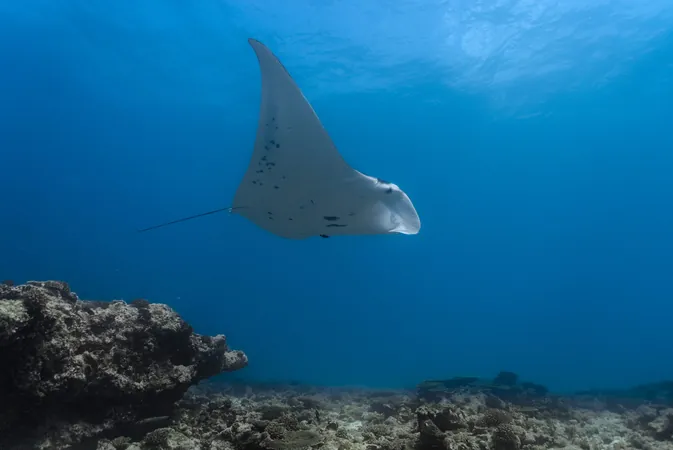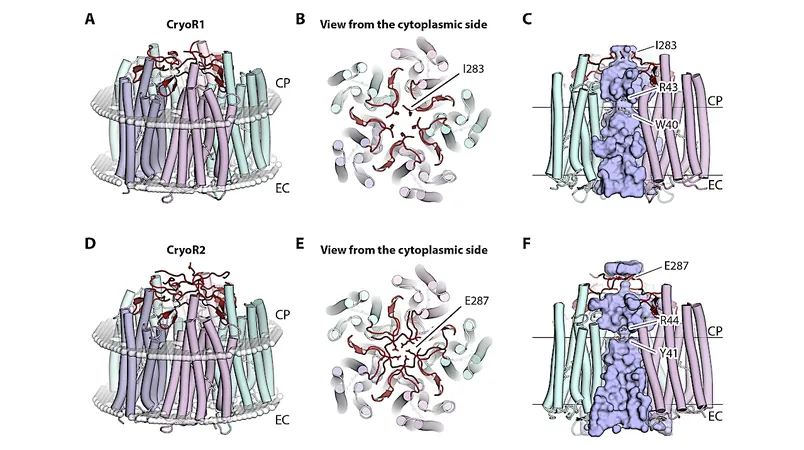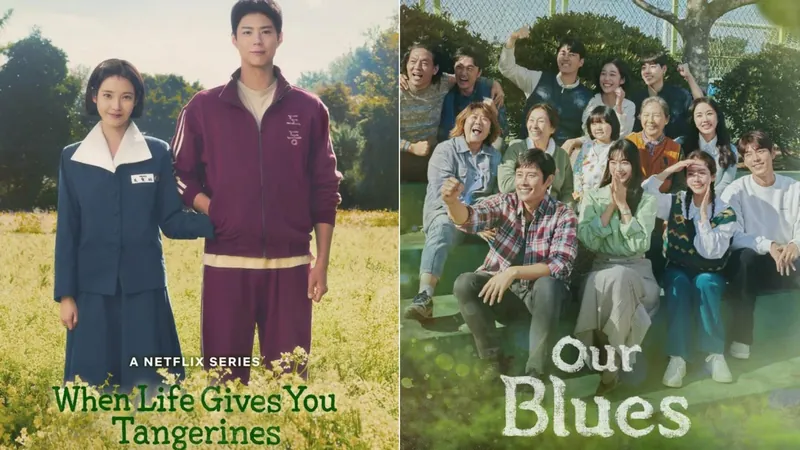
Microplastics Infiltrate Chagos' Pristine Waters: A Threat to Manta Rays
2025-06-04
Author: Wei Ling
Catastrophic Plastic Pollution Recorded in Remote Marine Sanctuaries
In a shocking revelation, scientists have found alarming levels of plastic contamination in the isolated waters of the Chagos Marine Protected Areas. These findings have sent ripples of concern through the conservation community, as Chagos has been recognized as a critical haven for reef manta rays, known for their grace and ecological significance.
Unprecedented Microplastic Levels Detected
A recent study published in The Society for Conservation Biology reveals that microplastics and microfibres from synthetic materials, such as polyester, are appearing in concentrations surpassing even those found in densely populated regions, like Indonesia. With plastic particles measuring up to 1.1 per cubic metre, urgent action is needed to tackle this growing crisis.
Manta Rays Face Growing Threats
These discoveries are particularly alarming for reef manta rays, which rely on filter feeding to survive. The risk of ingesting harmful microplastics may lead to severe health issues, including impaired fertility and weakened immune systems as well as clogging their filtration systems. Dr. Jessica Savage, the lead researcher of the study, emphasizes the dire situation facing these majestic creatures.
Plastic Pollution Knows No Boundaries
The study's findings are a stark reminder that even protected marine areas are not immune to the pervasive issue of plastic pollution. Dr. Savage noted that over half of the particles detected were synthetic fibres, primarily from clothing, suggesting that pollution is being transported across vast oceanic distances.
A Call for Global Action to Combat Plastic Crisis
Historically, studies have indicated that a staggering 99.9% of macro plastics in the Chagos Islands originate from outside the archipelago, which consists mainly of uninhabited atolls. The concentration of microplastics found around these pristine areas raises serious concerns about the source of this pollution, likely indicating that rivers from around the Indian Ocean are a significant contributor.
Impact on Populations of Threatened Manta Rays
With the reef manta ray classified as endangered, the long-term impact of microplastic ingestion could jeopardize their already vulnerable populations. The species has a slow reproductive rate, which means that any decline could significantly hinder conservation efforts.
Toxic Chemicals: A Hidden Danger
Dr. Heather Koldewey, a supervising researcher on the project, cautions against the hidden dangers posed by microplastics. The fibers carry toxic chemicals that can accumulate within manta rays, posing risks not only to marine life but to wildlife and humans as well.
Toward a Circular Economy: The Global Plastics Treaty
The Global Plastics Treaty, still in development, promises to be a game-changer in the fight against plastic pollution. By aiming to standardize plastic production processes and introduce responsible recycling initiatives, this treaty could help transition our throwaway culture into a more sustainable model.
Hope on the Horizon
Dr. Savage asserts that for isolated regions like Chagos, the treaty is crucial. While immediate solutions like beach clean-ups are essential, systemic changes are vital for comprehensive recovery. "This is a once-in-a-planet opportunity," she declares, highlighting the urgent need for international cooperation to combat this escalating issue.
Join the Fight Against Plastic Pollution
As the battle against plastic pollution intensifies, the time for action is now. Both local and global efforts are essential to safeguard the future of the beloved reef manta rays and preserve the extraordinary ecosystems they inhabit.


 Brasil (PT)
Brasil (PT)
 Canada (EN)
Canada (EN)
 Chile (ES)
Chile (ES)
 Česko (CS)
Česko (CS)
 대한민국 (KO)
대한민국 (KO)
 España (ES)
España (ES)
 France (FR)
France (FR)
 Hong Kong (EN)
Hong Kong (EN)
 Italia (IT)
Italia (IT)
 日本 (JA)
日本 (JA)
 Magyarország (HU)
Magyarország (HU)
 Norge (NO)
Norge (NO)
 Polska (PL)
Polska (PL)
 Schweiz (DE)
Schweiz (DE)
 Singapore (EN)
Singapore (EN)
 Sverige (SV)
Sverige (SV)
 Suomi (FI)
Suomi (FI)
 Türkiye (TR)
Türkiye (TR)
 الإمارات العربية المتحدة (AR)
الإمارات العربية المتحدة (AR)